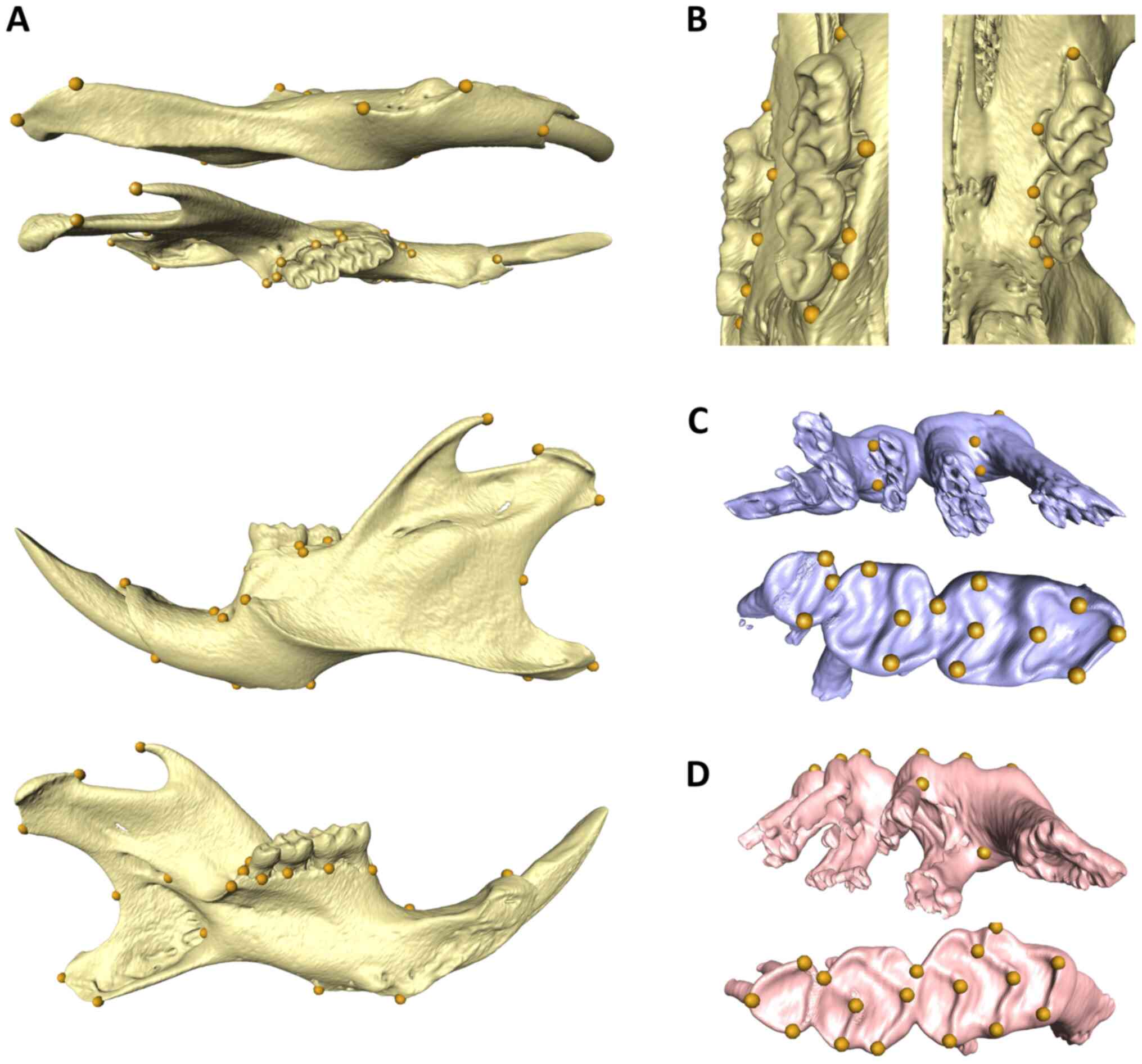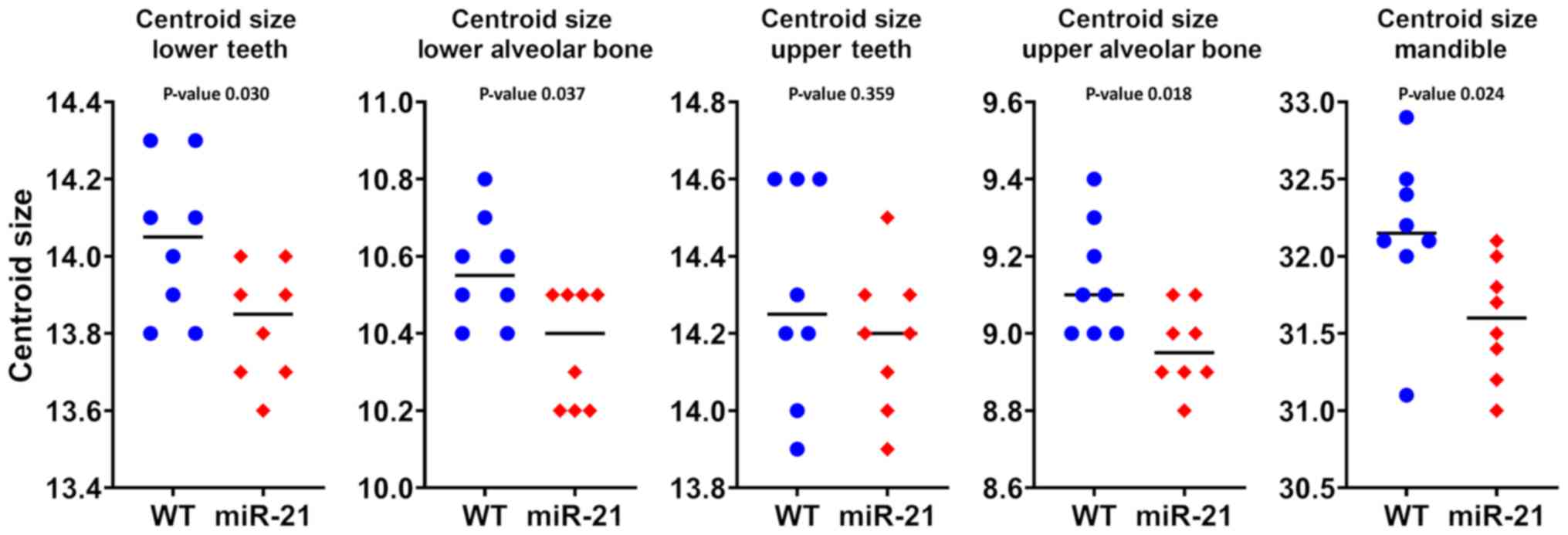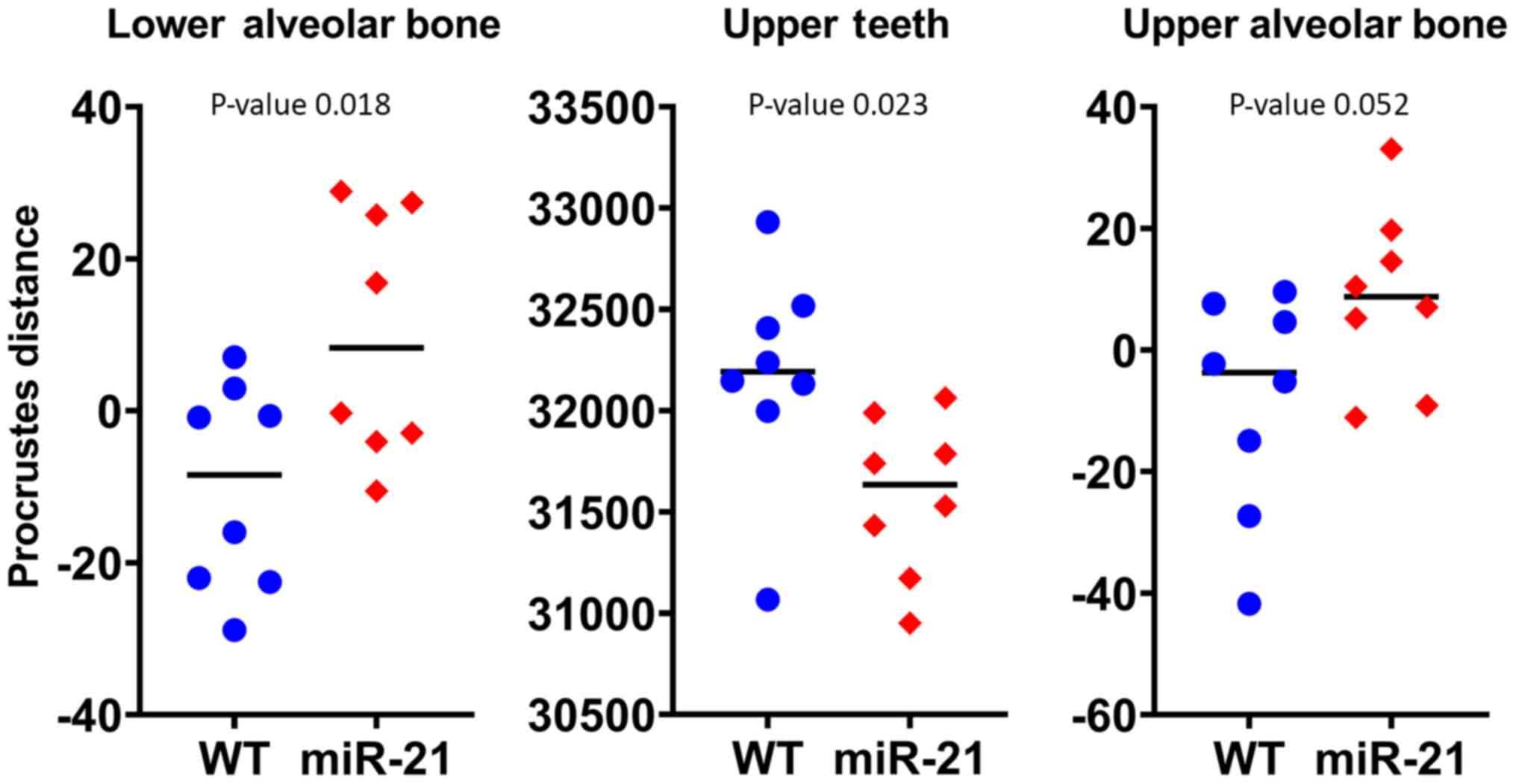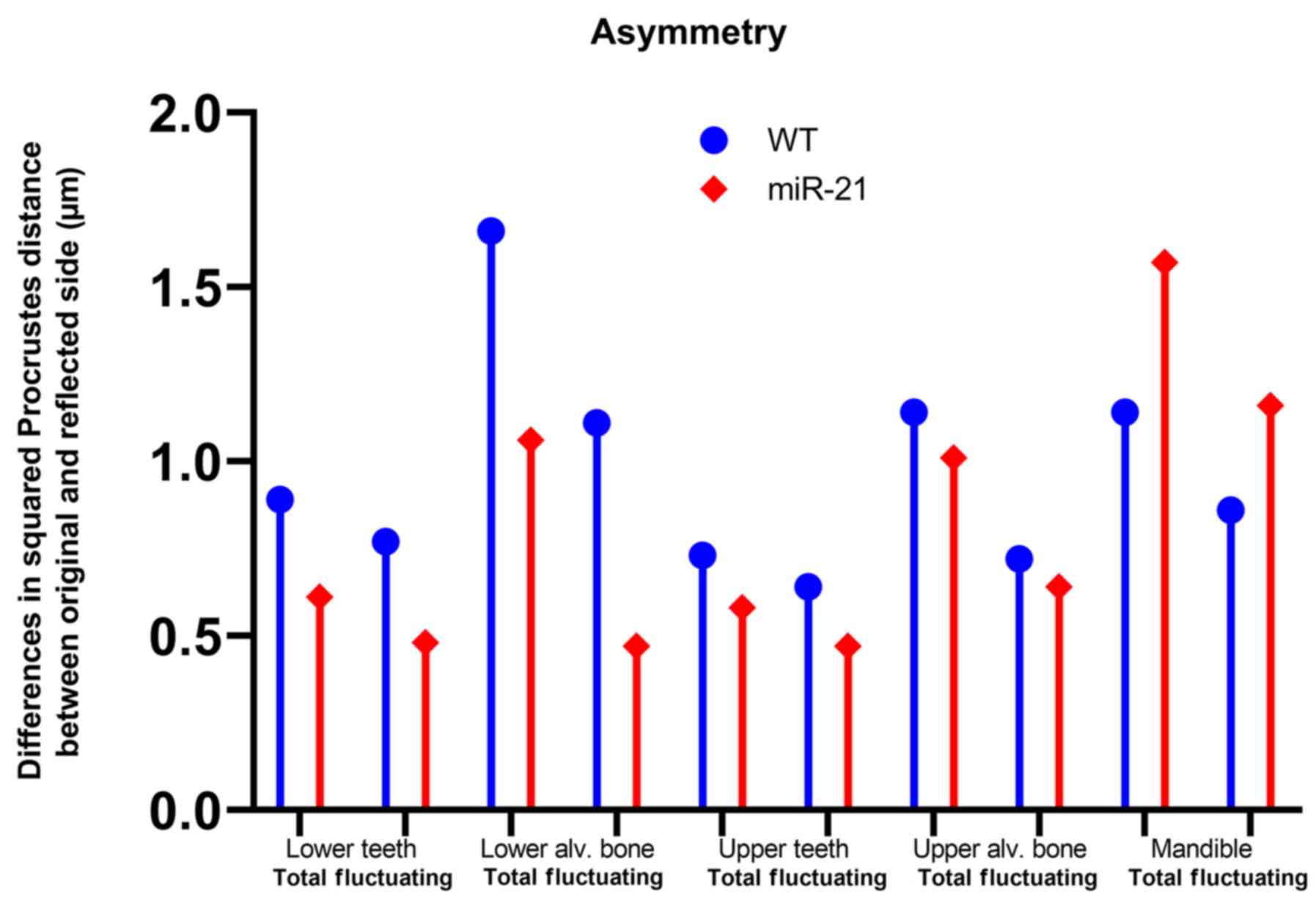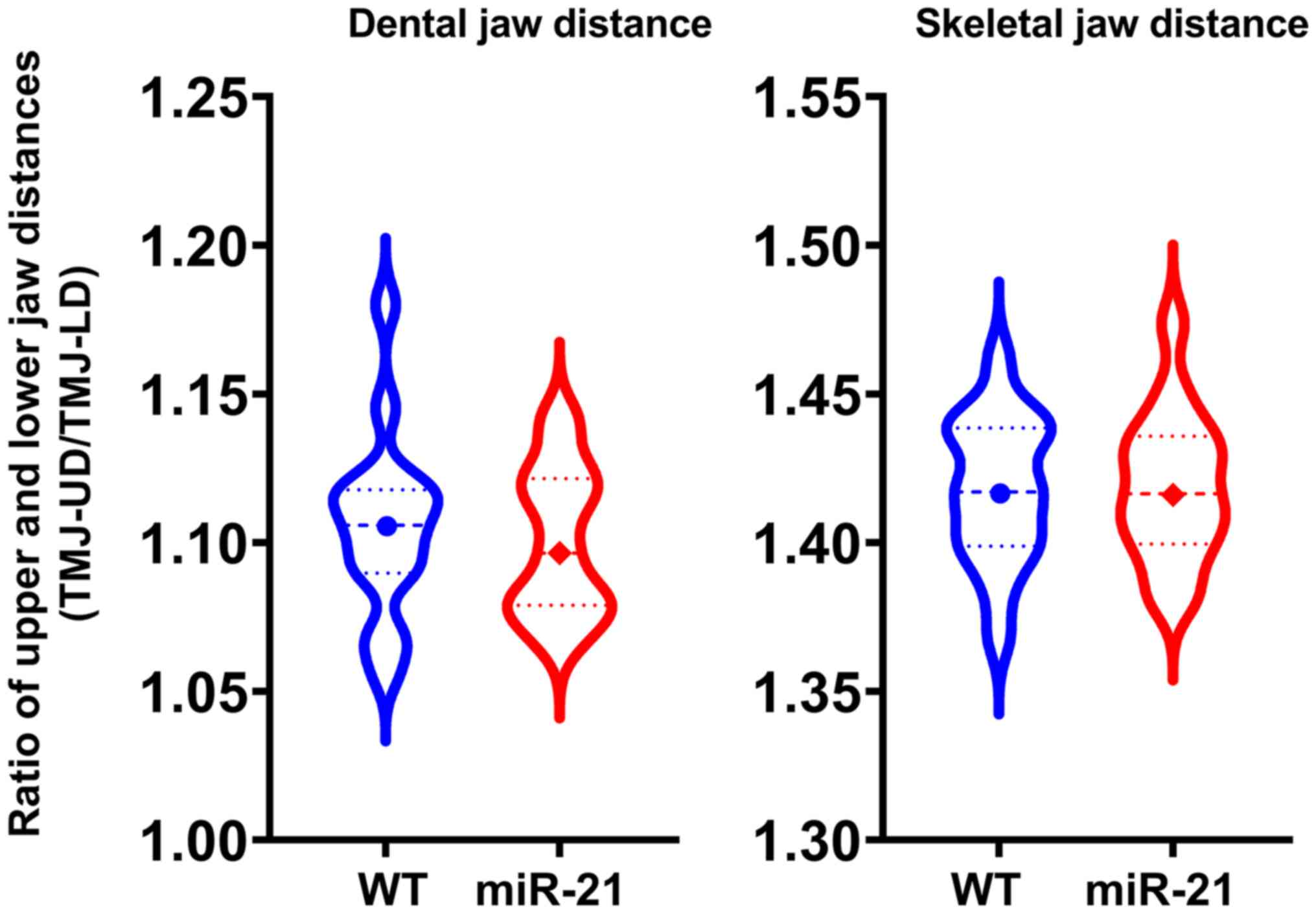|
1
|
Griffiths-Jones S, Grocock RJ, van Dongen
S, Bateman A and Enright AJ: miRBase: microRNA sequences, targets
and gene nomenclature. Nucleic Acids Res. 34:D140–D144. 2006.
View Article : Google Scholar : PubMed/NCBI
|
|
2
|
Feng YH, Wu CL, Tsao CJ, Chang JG, Lu PJ,
Yeh KT, Uen YH, Lee JC and Shiau AL: Deregulated expression of
sprouty2 and microRNA-21 in human colon cancer: Correlation with
the clinical stage of the disease. Cancer Biol Ther. 11:111–121.
2011. View Article : Google Scholar : PubMed/NCBI
|
|
3
|
Fulci V, Chiaretti S, Goldoni M, Azzalin
G, Carucci N, Tavolaro S, Castellano L, Magrelli A, Citarella F,
Messina M, et al: Quantitative technologies establish a novel
microRNA profile of chronic lymphocytic leukemia. Blood.
109:4944–4951. 2007. View Article : Google Scholar : PubMed/NCBI
|
|
4
|
Volinia S, Calin GA, Liu CG, Ambs S,
Cimmino A, Petrocca F, Visone R, Iorio M, Roldo C, Ferracin M, et
al: A microRNA expression signature of human solid tumors defines
cancer gene targets. Proc Natl Acad Sci USA. 103:2257–2261. 2006.
View Article : Google Scholar : PubMed/NCBI
|
|
5
|
Feng YH and Tsao CJ: Emerging role of
microRNA-21 in cancer. Biomed Rep. 5:395–402. 2016. View Article : Google Scholar : PubMed/NCBI
|
|
6
|
Li H, Yang F, Wang Z, Fu Q and Liang A:
MicroRNA-21 promotes osteogenic differentiation by targeting small
mothers against decapentaplegic 7. Mol Med Rep. 12:1561–1567. 2015.
View Article : Google Scholar : PubMed/NCBI
|
|
7
|
Weilner S, Skalicky S, Salzer B, Keider V,
Wagner M, Hildner F, Gabriel C, Dovjak P, Pietschmann P,
Grillari-Voglauer R, et al: Differentially circulating miRNAs after
recent osteoporotic fractures can influence osteogenic
differentiation. Bone. 79:43–51. 2015. View Article : Google Scholar : PubMed/NCBI
|
|
8
|
Kagiya T and Nakamura S: Expression
profiling of microRNAs in RAW264.7 cells treated with a combination
of tumor necrosis factor alpha and RANKL during osteoclast
differentiation. J Periodontal Res. 48:373–385. 2013. View Article : Google Scholar : PubMed/NCBI
|
|
9
|
Sugatani T, Vacher J and Hruska KA: A
microRNA expression signature of osteoclastogenesis. Blood.
117:3648–3657. 2011. View Article : Google Scholar : PubMed/NCBI
|
|
10
|
Sun Y, Xu L, Huang S, Hou Y, Liu Y, Chan
KM, Pan XH and Li G: mir-21 overexpressing mesenchymal stem cells
accelerate fracture healing in a rat closed femur fracture model.
BioMed Res Int. 2015:4123272015. View Article : Google Scholar : PubMed/NCBI
|
|
11
|
Strauss FJ, Stähli A, Kobatake R, Tangl S,
Heimel P, Apaza Alccayhuaman KA, Schosserer M, Hackl M, Grillari J
and Gruber R: miRNA-21 deficiency impairs alveolar socket healing
in mice. J Periodontol. May 12–2020.(Epub ahead of print). doi:
10.1002/JPER.19-0567. View Article : Google Scholar
|
|
12
|
Wang H, Wang H, Li X, Zhang Z, Zhao X,
Wang C and Wei F: MicroRNA-21 promotes bone reconstruction in
maxillary bone defects. J Oral Rehabil. Sep 25–2019.(Epub ahead of
print). doi: 10.1111/joor.12896 2019.
|
|
13
|
Zhou W, Su L, Duan X, Chen X, Hays A,
Upadhyayula S, Shivde J, Wang H, Li Y, Huang D, et al: MicroRNA-21
down-regulates inflammation and inhibits periodontitis. Mol
Immunol. 101:608–614. 2018. View Article : Google Scholar : PubMed/NCBI
|
|
14
|
Wu L, Su Y, Lin F, Zhu S, Wang J, Hou Y,
Du J, Liu Y and Guo L: MicroRNA-21 promotes orthodontic tooth
movement by modulating the RANKL/OPG balance in T cells. Oral Dis.
26:370–380. 2020. View Article : Google Scholar : PubMed/NCBI
|
|
15
|
Chen N, Sui BD, Hu CH, Cao J, Zheng CX,
Hou R, Yang ZK, Zhao P, Chen Q, Yang QJ, et al: MicroRNA-21
Contributes to Orthodontic Tooth Movement. J Dent Res.
95:1425–1433. 2016. View Article : Google Scholar : PubMed/NCBI
|
|
16
|
Barnett RE, Conklin DJ, Ryan L, Keskey RC,
Ramjee V, Sepulveda EA, Srivastava S, Bhatnagar A and Cheadle WG:
Anti-inflammatory effects of miR-21 in the macrophage response to
peritonitis. J Leukoc Biol. 99:361–371. 2016. View Article : Google Scholar : PubMed/NCBI
|
|
17
|
Hu CH, Sui BD, Du FY, Shuai Y, Zheng CX,
Zhao P, Yu XR and Jin Y: miR-21 deficiency inhibits osteoclast
function and prevents bone loss in mice. Sci Rep. 7:431912017.
View Article : Google Scholar : PubMed/NCBI
|
|
18
|
Yin K, Hacia JG, Zhong Z and Paine ML:
Genome-wide analysis of miRNA and mRNA transcriptomes during
amelogenesis. BMC Genomics. 15:9982014. View Article : Google Scholar : PubMed/NCBI
|
|
19
|
Klingenberg CP: Size, shape, and form:
Concepts of allometry in geometric morphometrics. Dev Genes Evol.
226:113–137. 2016. View Article : Google Scholar : PubMed/NCBI
|
|
20
|
Gómez-Robles A, Martinón-Torres M,
Bermúdez de Castro JM, Margvelashvili A, Bastir M, Arsuaga JL,
Pérez-Pérez A, Estebaranz F and Martínez LM: A geometric
morphometric analysis of hominin upper first molar shape. J Hum
Evol. 53:272–285. 2007. View Article : Google Scholar : PubMed/NCBI
|
|
21
|
Gunz P and Mitteroecker P: Semilandmarks:
A method for quantifying curves and surfaces. Hystrix. 24:103–109.
2013.
|
|
22
|
Gómez-Robles A, Martinón-Torres M,
Bermúdez de Castro JM, Prado L, Sarmiento S and Arsuaga JL:
Geometric morphometric analysis of the crown morphology of the
lower first premolar of hominins, with special attention to
Pleistocene Homo. J Hum Evol. 55:627–638. 2008. View Article : Google Scholar : PubMed/NCBI
|
|
23
|
Badawi-Fayad J and Cabanis EA:
Three-dimensional Procrustes analysis of modern human craniofacial
form. Anat Rec (Hoboken). 290:268–276. 2007. View Article : Google Scholar : PubMed/NCBI
|
|
24
|
Caskenette D, Penuela S, Lee V, Barr K,
Beier F, Laird DW and Willmore KE: Global deletion of Panx3
produces multiple phenotypic effects in mouse humeri and femora. J
Anat. 228:746–756. 2016. View Article : Google Scholar : PubMed/NCBI
|
|
25
|
Parsons TE, Weinberg SM, Khaksarfard K,
Howie RN, Elsalanty M, Yu JC and Cray JJ Jr: Craniofacial shape
variation in Twist1+/− mutant mice. Anat Rec (Hoboken).
297:826–833. 2014. View
Article : Google Scholar : PubMed/NCBI
|
|
26
|
Ledevin R, Chevret P, Ganem G,
Britton-Davidian J, Hardouin EA, Chapuis JL, Pisanu B, da Luz
Mathias M, Schlager S, Auffray JC, et al: Phylogeny and adaptation
shape the teeth of insular mice. Proc Biol Sci. 283:2832016.
|
|
27
|
Gómez Cano AR, Hernández Fernández M and
Alvarez-Sierra MA: Dietary ecology of Murinae (Muridae, Rodentia):
A geometric morphometric approach. PLoS One. 8:e790802013.
View Article : Google Scholar : PubMed/NCBI
|
|
28
|
Paradis MR, Raj MT and Boughner JC: Jaw
growth in the absence of teeth: The developmental morphology of
edentulous mandibles using the p63 mouse mutant. Evol Dev.
15:268–279. 2013. View Article : Google Scholar : PubMed/NCBI
|
|
29
|
Zurowski C, Jamniczky H, Graf D and
Theodor J: Deletion/loss of bone morphogenetic protein 7 changes
tooth morphology and function in Mus musculus: Implications for
dental evolution in mammals. R Soc Open Sci. 5:1707612018.
View Article : Google Scholar : PubMed/NCBI
|
|
30
|
Bookstein FL: Measuring and Reasoning:
Numerical Inference in the Sciences. University Press; Cambridge:
2014, View Article : Google Scholar
|
|
31
|
Coquerelle M, Bookstein FL, Braga J,
Halazonetis DJ, Weber GW and Mitteroecker P: Sexual dimorphism of
the human mandible and its association with dental development. Am
J Phys Anthropol. 145:192–202. 2011. View Article : Google Scholar : PubMed/NCBI
|
|
32
|
Mardia kV, Bookstein FL and Moreton IJ:
Statistical assessment of bilateral symmetry of shapes. Biometrika.
87:285–300. 2000. View Article : Google Scholar
|
|
33
|
Sehic A, Tulek A, Khuu C, Nirvani M, Sand
LP and Utheim TP: Regulatory roles of microRNAs in human dental
tissues. Gene. 596:9–18. 2017. View Article : Google Scholar : PubMed/NCBI
|
|
34
|
Schwarze UY, Dobsak T, Gruber R and
Bookstein FL: Anatomical similarity between the Sost-knockout mouse
and sclerosteosis in humans. Anat Rec. 303:2295–2308. 2020.
View Article : Google Scholar
|
|
35
|
Keller JM, Allen DE, Davis CR and Leamy
LJ: 2,3,7,8-Tetrachlorodibenzo-p-dioxin affects fluctuating
asymmetry of molar shape in mice, and an epistatic interaction of
two genes for molar size. Heredity. 98:259–267. 2007. View Article : Google Scholar : PubMed/NCBI
|
|
36
|
Klingenberg CP, Leamy LJ, Routman EJ and
Cheverud JM: Genetic architecture of mandible shape in mice:
Effects of quantitative trait loci analyzed by geometric
morphometrics. Genetics. 157:785–802. 2001.PubMed/NCBI
|
|
37
|
Schaefer K, Lauc T, Mitteroecker P, Gunz P
and Bookstein FL: Dental arch asymmetry in an isolated Adriatic
community. Am J Phys Anthropol. 129:132–142. 2006. View Article : Google Scholar : PubMed/NCBI
|
|
38
|
Wilkins AS: Canalization: A molecular
genetic perspective. BioEssays. 19:257–262. 1997. View Article : Google Scholar : PubMed/NCBI
|
|
39
|
Gene Ontology C; Gene Ontology Consortium:
Gene Ontology Consortium: Going forward. Nucleic Acids Res.
43D:D1049–D1056. 2015.
|
|
40
|
Krivanek J, Soldatov RA, Kastriti ME,
Chontorotzea T, Herdina AN, Petersen J, Szarowska B, Landova M,
Matejova VK, Holla LI, et al: Dental cell type atlas reveals stem
and differentiated cell types in mouse and human teeth. Nat Commun.
11:48162020. View Article : Google Scholar : PubMed/NCBI
|
|
41
|
Beertsen W, Holmbeck K, Niehof A, Bianco
P, Chrysovergis K, Birkedal-Hansen H and Everts V: On the role of
MT1-MMP, a matrix metalloproteinase essential to collagen
remodeling, in murine molar eruption and root growth. Eur J Oral
Sci. 110:445–451. 2002. View Article : Google Scholar : PubMed/NCBI
|
|
42
|
Zhao W, Dong Y, Wu C, Ma Y, Jin Y and Ji
Y: miR-21 overexpression improves osteoporosis by targeting RECK.
Mol Cell Biochem. 405:125–133. 2015. View Article : Google Scholar : PubMed/NCBI
|
|
43
|
Hu Y, Smith CE, Richardson AS, Bartlett
JD, Hu JC and Simmer JP: MMP20, KLK4, and MMP20/KLK4 double null
mice define roles for matrix proteases during dental enamel
formation. Mol Genet Genomic Med. 4:178–196. 2015. View Article : Google Scholar : PubMed/NCBI
|
|
44
|
Dalmay T and Edwards DR: MicroRNAs and the
hallmarks of cancer. Oncogene. 25:6170–6175. 2006. View Article : Google Scholar : PubMed/NCBI
|
|
45
|
Esquela-Kerscher A and Slack FJ: Oncomirs
- microRNAs with a role in cancer. Nat Rev Cancer. 6:259–269. 2006.
View Article : Google Scholar : PubMed/NCBI
|
|
46
|
Zhu Q, Wang Z, Hu Y, Li J, Li X, Zhou L
and Huang Y: miR-21 promotes migration and invasion by the
miR-21-PDCD4-AP-1 feedback loop in human hepatocellular carcinoma.
Oncol Rep. 27:1660–1668. 2012.PubMed/NCBI
|
|
47
|
Giovannetti E, Funel N, Peters GJ, Del
Chiaro M, Erozenci LA, Vasile E, Leon LG, Pollina LE, Groen A,
Falcone A, et al: MicroRNA-21 in pancreatic cancer: Correlation
with clinical outcome and pharmacologic aspects underlying its role
in the modulation of gemcitabine activity. Cancer Res.
70:4528–4538. 2010. View Article : Google Scholar : PubMed/NCBI
|















